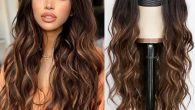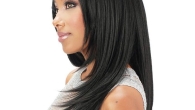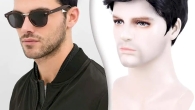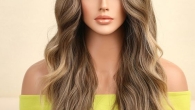
Why Did People Wear Wig? A Journey Through History
For centuries, wigs have adorned the heads of royalty, socialites, and even everyday people. But why did people wear wig? The answer transcends mere vanity. Wigs served a multitude of purposes, reflecting social status, hygiene practices, and even medical concerns throughout history.
From Ancient Times to the Renaissance: Wigs as Symbols of Power and Status
The use of wigs stretches far back in time. Ancient Egyptians, Assyrians, and Greeks all donned wigs for various reasons. Some wore them for ceremonial purposes, while others used them to signify social standing. Expensive wigs, often crafted from human hair or wool, became a symbol of wealth and power.

Egyptian Pharaohs and the Status Wig
Egyptian pharaohs wore elaborate wigs, often dyed blue or black, to project an image of divinity and authority. These wigs, meticulously crafted from human hair or sheep’s wool, were intricately braided and adorned with jewels and precious metals.
The Rise of Wigs in Ancient Greece and Rome
In ancient Greece and Rome, wigs were primarily worn by actors and performers. However, there’s evidence of wealthy women using wigs made from blonde German hair, a prized commodity at the time.
The Middle Ages: Wigs for Practicality and Religious Symbolism
During the Middle Ages, wigs took a backseat. Hygiene practices were poor, and head lice were rampant. People often shaved their heads to combat this issue, with wigs only being used for specific occasions. However, religious figures sometimes wore wigs to symbolize piety and detachment from worldly concerns.

The 17th and 18th Centuries: The Golden Age of Wigs
The 17th and 18th centuries witnessed the rise of the wig as a dominant fashion statement, particularly in Europe. This era is often referred to as the “Golden Age of Wigs.”
King Louis XIV and the Fashionable Peruke
King Louis XIV of France is often credited with popularizing wigs. Facing premature hair loss, he began wearing wigs, sparking a trend among the French aristocracy. These wigs, called perukes, were extravagant creations made from real human hair. They were often long, curled, and heavily powdered white with wheat starch or rice flour.
Wigs as a Social Signifier
Wigs in the 17th and 18th centuries became a marker of social status. The wealthier you were, the more elaborate and expensive your wig would be. The style, color, and length of the wig all conveyed subtle messages about your social standing and fashion sense.

Beyond Fashion: Wigs and Medical Concerns
While wigs were primarily a fashion statement, they also served a practical purpose. Syphilis was a rampant disease in Europe during this period, and one of its symptoms was hair loss. Wigs became a way for people to conceal the effects of the disease and maintain a fashionable appearance.
The 19th and 20th Centuries: The Decline and Resurgence of Wigs
The 19th century saw a decline in the popularity of wigs. Men’s hairstyles became shorter and more natural, and wigs were relegated primarily to theatrical productions and legal professions. However, wigs never entirely disappeared.
The Rise of Theatrical Wigs
Wigs remained a staple in the world of theater and performance. Actors used wigs to transform their appearance and embody different characters. From elaborate period pieces to fantastical creatures, wigs played a crucial role in bringing characters to life on stage.

The 20th Century and the Return of Wigs
The 20th century witnessed a resurgence of wigs, particularly among women. Short, bobbed hairstyles became fashionable, and wigs offered women a way to experiment with different looks without permanently changing their hair. Additionally, synthetic wigs became more affordable and easier to maintain, making them accessible to a wider audience.
Modern Wigs: Beyond Fashion
Today, wigs are worn for a variety of reasons beyond fashion. People experiencing hair loss due to medical conditions or aging can use wigs to regain confidence and feel comfortable in their own skin. Wigs are also a popular choice for those who want to change their hairstyle or experiment with different colors without damaging their natural hair.
Choosing the Perfect Wig: A Guide for Every Need
Now that you understand the rich history and enduring appeal of wigs, you might be wondering if a wig is right for you. With a vast array of styles, materials, and colors available, choosing the perfect wig can seem daunting. But fear not! This guide will equip you with the knowledge to navigate the world of wigs and find the one that best suits your needs and desires.
Understanding Wig Types: From Theatrical to Everyday
The first step is to understand the different types of wigs available. Here’s a breakdown of some common wig categories:

- Full Lace Wigs: These high-quality wigs offer the most realistic look. They are constructed with a lace base that allows for natural-looking hairlines and parting options. Full lace wigs are ideal for everyday wear or special occasions.
- Lace Front Wigs: These wigs have a lace front that mimics a natural hairline. They offer more versatility in styling compared to full lace wigs, but are still quite realistic. Lace front wigs are a popular choice for those seeking a natural look at a slightly lower price point.
- Synthetic Wigs: Made from synthetic fibers, these wigs are generally more affordable and easier to maintain than human hair wigs. They come in a wide variety of styles, colors, and textures, making them a great option for experimenting with different looks.
- Human Hair Wigs: Offering the most natural look and feel, human hair wigs are perfect for those who desire a luxurious and realistic hairpiece. However, they require more care and styling compared to synthetic wigs.
- Costume Wigs: Designed for theatrical productions, cosplay, or costume parties, these wigs come in a wide range of vibrant colors, unusual styles, and fantastical designs.
Finding Your Perfect Fit: Sizing and Comfort
A comfortable and well-fitting wig is essential. Most wigs come in standard sizes, but some manufacturers offer petite or large sizes for a better fit. Here are some tips for ensuring a comfortable wig experience:
- Measure your head: Before purchasing a wig, measure the circumference of your head to ensure you get the right size.
- Adjustable straps: Look for wigs with adjustable straps at the nape for a snug but comfortable fit.
- Wig caps: Wearing a wig cap underneath your wig helps to keep your natural hair in place and prevents slippage.
Styling Your Wig: Unleash Your Creativity
The beauty of wigs lies in their versatility. You can style your wig to match your personal style or experiment with different looks entirely. Here are some tips for styling your wig:

- Heat styling: Some synthetic wigs can be styled with heat tools like flat irons or curling wands on low heat settings. Always check the wig’s care instructions before using heat.
- Hairspray and styling products: Use hairspray and other styling products specifically formulated for wigs to hold your desired style in place.
- Accessorize: Elevate your wig look with headbands, barrettes, or clips for a personalized touch.
Caring for Your Wig: Ensuring Longevity
With proper care, your wig can last for a long time. Here are some essential wig care tips:
- Gentle washing: Wash your wig periodically with a mild shampoo specifically designed for wigs. Avoid using harsh chemicals or hot water.
- Conditioning: Regularly condition your wig to maintain its softness and manageability.
- Detangling: Use a wide-tooth comb specifically designed for wigs to gently detangle them after each wear.
- Storage: When not in use, store your wig on a wig stand or mannequin head to maintain its shape.
Embrace Your Confidence with Wigs
Wigs are more than just hairpieces; they are a powerful tool for self-expression and confidence building. Whether you’re seeking a subtle change or a dramatic transformation, there’s a wig out there waiting to help you unleash your inner fashionista. So, explore the exciting world of wigs, and discover the possibilities for a whole new you!












Leave a Reply